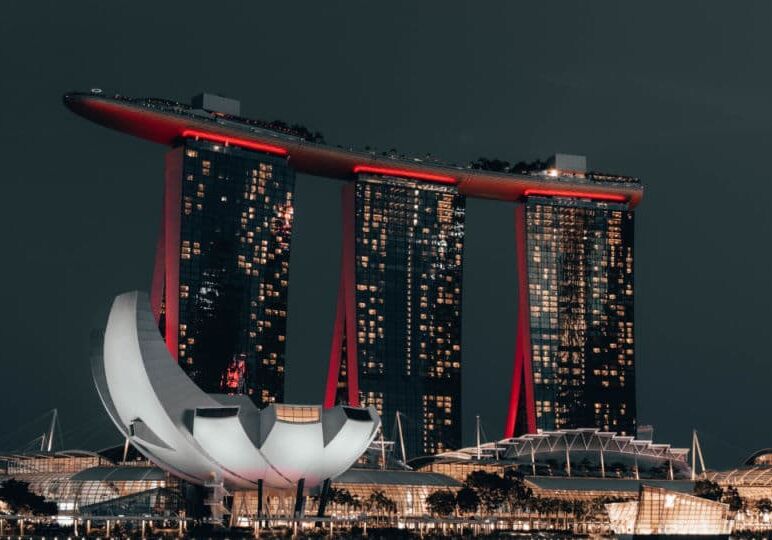Redefining refining: Spotlight on Singapore petrochemical crossroads

Singapore’s chemical future stems from a rich history. 2015 saw the energy and chemicals sector generate S$81billion (c. US$60.4 billion), around a third of the nation’s total manufacturing output. A year later, S$1.3 billion (c.US$ 0.97 billion) of fixed asset investments poured into the sector.
Asian Downstream Insights explores the evolution of Singapore’s petrochemical journey and how petrochemicals will be shaping the next phase of the Red Dot’s identity.
Fertile ground for petrochemical growth
The nation has raked in over S$35 billion (c. US$ 26.03 billion) in investment from global players such as BASF, Lanxess, and Mitsui Chemicals. Considerable efforts are being made to ensure the country is a breeding ground for not only business, but also talent, with projects such as Jurong Island’s Chemical Process Technology Centre, which trains engineering graduates through simulations of initiation, termination and safety procedures.
Jurong Island – Singapore’s manufacturing hub and a hotspot for refining and petrochemicals – has attracted over S$50 billion (c. US$ 37.3 billion) in investment to date. It houses major operations of over 100 global chemicals hubs, and some of the world’s largest downstream leaders, including Shell, Chevron and ExxonMobil.
But while demand for petrochemical-based products such as detergents, sanitisers and single use plastics surged during 2020, as operators look past the pandemic to a longer term outlook, they are facing the inconvenient truth that investing in new petrochemicals facilities requires billions of dollars, and a longer time-frame, in a risky economic climate.
ExxonMobil, who have chosen Singapore as the APAC hub for their downstream and chemical operations and their largest integrated refining and petrochemical complex, and who have invested more than S$25 billion in fixed assets in the Republic, recently made the shock announcement that they would be cutting 300 jobs in Singapore as part of a wider 14,000 personnel cull. They are not the only ones. Shell Singapore announced plans last Autumn to slash 500 Pulau Bukom refinery jobs over the next three years, and Chevron has also admitted it will cut at least 10% of its Singapore headcount.
What’s more, demand slowdown in China – a major consumer and importer of C4 chemicals and aromatics – and feedstock inflexibility in new ethane steam crackers, adds further uncertainty to the Asian market.
Has COVID-19 taken the shine off Singapore’s rising star? Or provided new pathways for its potential?
All eyes on China
Much of this question hinges on China, a major global chemicals player, and a major market for Singapore. The Asian giant made up around 40% of Singapore’s petrochemicals exports in 2018. Even during the volatile 2020, China’s petrochemical demand remained relatively stable, and their comparatively quick recovery post-COVID helped fuel a healthy surge in petrochemicals’ markets at the start of the year. This has put a rosy outlook on the future: not just for China, or for Singapore, but for Asia as a whole.
A recently-signed Regional Comprehensive Economic Partnership (RCEP), which includes the ten ASEAN nations, is set to give petrochemical trades within Asia a healthy long-term boost. As China looks to form new partnerships in the wake of tensions with the USA, this could be the ideal opportunity for Singapore to build on an already strong foundation, and take a critical petrochemical partnership to the next level.
Going green for future growth
On a domestic level, Singapore is also making seismic shifts towards a sustainable future: which will have impact on its petrochemical growth. The nation’s Green Plan 2030 – a Government initiative to make the “goal of sustainable development…a whole-of-nation endeavour” will also shift downstream’s focus on more sustainable fuel sources. Here, as Singapore MP, Henry Kwek reminds us, it would be “overly simplistic” to see Singapore’s petrochemical sector solely as a carbon emitter.
With the long term future of fossil fuels still uncertain, and demand predicted to peak within the next decade, petrochemicals can provide an opportunity for Singapore’s downstream operators to diversify their business, as well as aligning with wider national Green goals. Integrating new technologies for carbon capture, storage and utilisation could cut petrochemical plants’ emissions, and pave the way for a more seamless energy transition, with minimal economic impact.
Forging a future-proof identity
Singapore Economic Development Board’s Chemicals and Materials Director Khalil A Bakar is convinced that “Singapore is in a strong position to recover once the Covid-19 situation stabilises”, helped by the growth potential in Asia and ASEAN markets. But this is not just down to circumstance. As Bakar is quick to add, the nation is also making conscious targeted efforts to “diversify the portfolio of industries in Singapore…so as to strengthen our resilience as an economy”.
The road to recovery has a clear target destination, and as Singapore reinvents itself – from Lion City to Red Dot, and now petrochemical pioneer, it’s striding ahead with purpose.